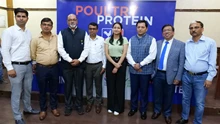
The Indian aluminium industry would require an additional capital expenditure (CAPEX) of nearly INR 2.2 lakh crore (~USD 29 billion) to achieve net zero carbon emissions, according to an independent study by the Council on Energy, Environment and Water (CEEW) released recently. Further, renewable energy (RE) power sources could abate 49 per cent of the total emissions from the industry. A complete transition to RE is currently not feasible as it is intermittent in nature, and a backup will always be necessary in case of grid failure. Aluminium, a widely utilised metal and one of India's fastest-growing in terms of production is predominantly used by the power sector.
The CEEW study—which is the first-of-its-kind estimation of the cost of decarbonising this critical industry—finds that net-zero aluminium could be 61 per cent more expensive. And decarbonising this industry would also lead to a yearly increase of INR 26,049 crore (USD 3.5 billion) in additional operating expenditure (OPEX).
Although India’s per capita aluminium consumption is low at 2.5 kg (compared to the world average of 11 kg), the industry emitted nearly 77 million tonnes of CO2 (MtCO2) in 2019-20. Electricity consumption by plants accounted for 80 per cent of the total emissions, while process emissions and fuel consumption accounted for the rest. The CEEW study, funded by ‘bp’, provides a marginal abatement cost (MAC) curve for the Indian aluminium industry — it shows what technologies could help the industry reach net-zero emissions and at what cost.
Hemant Mallya, Fellow, CEEW, said, “In an effort to inform the decarbonisation of India’s hard-to-abate sectors, CEEW produced four reports on what it would take for the cement, steel, fertiliser, and aluminium industries to go net zero. A clear emerging message is the requirement for large amounts of capital and scaleup from various solution providers, including the renewable power, alternative fuels, and carbon storage and utilisation sectors. Aluminium and fertiliser are key industries for India’s economic growth, and significant government support will be necessary to build the necessary infrastructure, such as power grid and pipelines, to decarbonise them and meet India’s climate goals.”
Sashi Mukundan, President, bp India and senior vice president, bp Group, said, “With an 8 per cent-plus economic growth path, Indian industry is seeing a growth trajectory like never before. This growth needs to happen in a responsible manner such that economic progress is balanced with minimising the climate impact. This is challenging for hard-to-abate sectors where we require low or zero-carbon-emitting energy sources. bp’s partnership with CEEW focuses on optimising these lower carbon pathways for the hard-to-abate sectors.”
The CEEW study finds that energy efficiency in alumina refining and aluminium smelting and waste heat recovery through electrolysis off-gas can reduce emissions without increasing the cost of aluminium. However, these technologies can only abate 8 per cent of the total emissions. All the remaining carbon abatement measures, such as using RE and carbon capture, have a positive MAC, meaning that there is a net cost incurred for facilities deploying these measures.
Deepak Yadav, Programme Lead, CEEW, said, “Given the highly energy-intensive aluminium production process and the expected growth in demand, decarbonising the sector will have a significant impact on India’s cumulative industrial emissions. We recommend incentivising renewable energy since the majority of aluminium smelting plants are in eastern states that do not have optimal wind power potential. Further, the focus should be building an R&D ecosystem to generate data and evidence on decarbonisation measures. Finally, the Indian government should formulate favourable policies to build a carbon capture, utilisation and storage (CCUS) ecosystem.”
Continuing its series on decarbonising hard-to-abate sectors, CEEW also launched a study on what it would take for the fertiliser industry to go net zero. India is the second-largest fertiliser producer in the world, accounting for ~20 per cent of global production. However, it is a significant source of greenhouse gas emissions (~25 MtCO2 annually) due to energy-intensive production processes and extensive fossil fuel use, particularly natural gas.
Because fertiliser production does not require much electricity, the CEEW study found that switching to RE power would result in a mere 2 per cent reduction in emissions from this industry. Ammonia (urea) production accounts for ~95 per cent of the emissions in this sector, and therefore, switching from grey to green ammonia can result in a 151 per cent emissions reduction. This would result in net negative emissions for the sector. Finally, carbon management options such as carbon capture and sequestration (CCS), carbon capture and utilisation (CCU), and afforestation may also be adopted by the industry.











